Greater Manas Landscape Conservation - India
By restocking and enlarging a park, we restored its natural heritage and brought back the one-horned rhino
See projectThe Indian rhinoceros, also known as the greater one-horned rhino, is the largest rhino species on Earth. Males can reach nearly three tonnes in weight and stand taller than most humans. True to its name, the one-horned rhino has just one horn, setting it apart from its African counterparts. However, it’s not the only rhino with one horn—the Javan rhino also sports a single horn.
The greater one-horned rhino is one of the most well-known success stories in conservation. Once widespread across northern India, greater one-horned rhinos were hunted for sport and killed by farmers, causing their numbers to dwindle. At the beginning of the 20th century, only around 200 Indian rhinos remained. Since then, conservation efforts have increased that number 20 times over.
Although Indian rhinos are solitary in nature, males are not aggressively territorial, and their home ranges often overlap. They will also gather at prominent spots to wallow or graze. Wallowing is an important activity for rhinos—they find shallow mud pools and roll around to coat their skin in a protective layer of mud. It helps them stay cool during the hottest hours of the day, keeps biting insects at bay, and potentially even blocks UV rays.
Because they spend their afternoons wallowing, Indian rhinos typically feed during the early morning and late evening when the temperatures are cooler.
Greater one-horned rhinos have slow reproduction habits, which is typical for mammals of their size. Females gestate for around 15 to 16 months and raise their calves alone for at least one and a half years. A healthy female rhino with plenty of potential partners will give birth to a single calf every two to three years.
Like other rhinos, the Indian rhino has poor sight and instead relies on its superior senses of hearing and smell. Indian rhinos are great swimmers and can cross rivers without trouble. This sets them apart from African rhinos, who can’t swim.
As megaherbivores, Indian rhinos are integral to the health of their habitats. They keep the balance of different plant species in check and reduce competition for nutrients. They also share their homes with a range of other creatures, who also benefit when we work to protect rhinos.
The Indian rhino’s scientific name is Rhinoceros unicornis. The name Rhinoceros comes from the Ancient Greek words for nose (rhino) and horn (ceros). Unicornis comes from the Latin words for one (uni) and horn (cornis), just like the mythical unicorn.
In 1996, Indian rhinos were classified as endangered by the IUCN. However, thanks to conservation efforts during the 21st century, the IUCN changed their status to vulnerable in 2008, and it stayed there in 2018. The population trend for this species is listed as increasing.
While conservation efforts have successfully prevented the extinction of the greater one-horned rhino, its situation is still unstable. With the population protected in reserves and natural areas of suitable habitat decreasing, it will be difficult to spread the population out and allow it to grow further. The reserves are also necessary to protect the rhinos from poaching, which continues to be a problem as the demand for rhino horn persists.
The Indian one-horned rhinoceros once roamed the tall grasslands of northern India and Nepal, where the grass can grow as tall as seven meters. Today, however, the remaining Indian rhinos live in 11 reserves in different areas of their historical ranges. Although living in reserves still counts as living in the wild, the rhinos are closely monitored for their protection.
Threats to the Indian rhino are largely manmade, including poaching, habitat loss, reduced genetic diversity, human-animal conflict, and climate change.
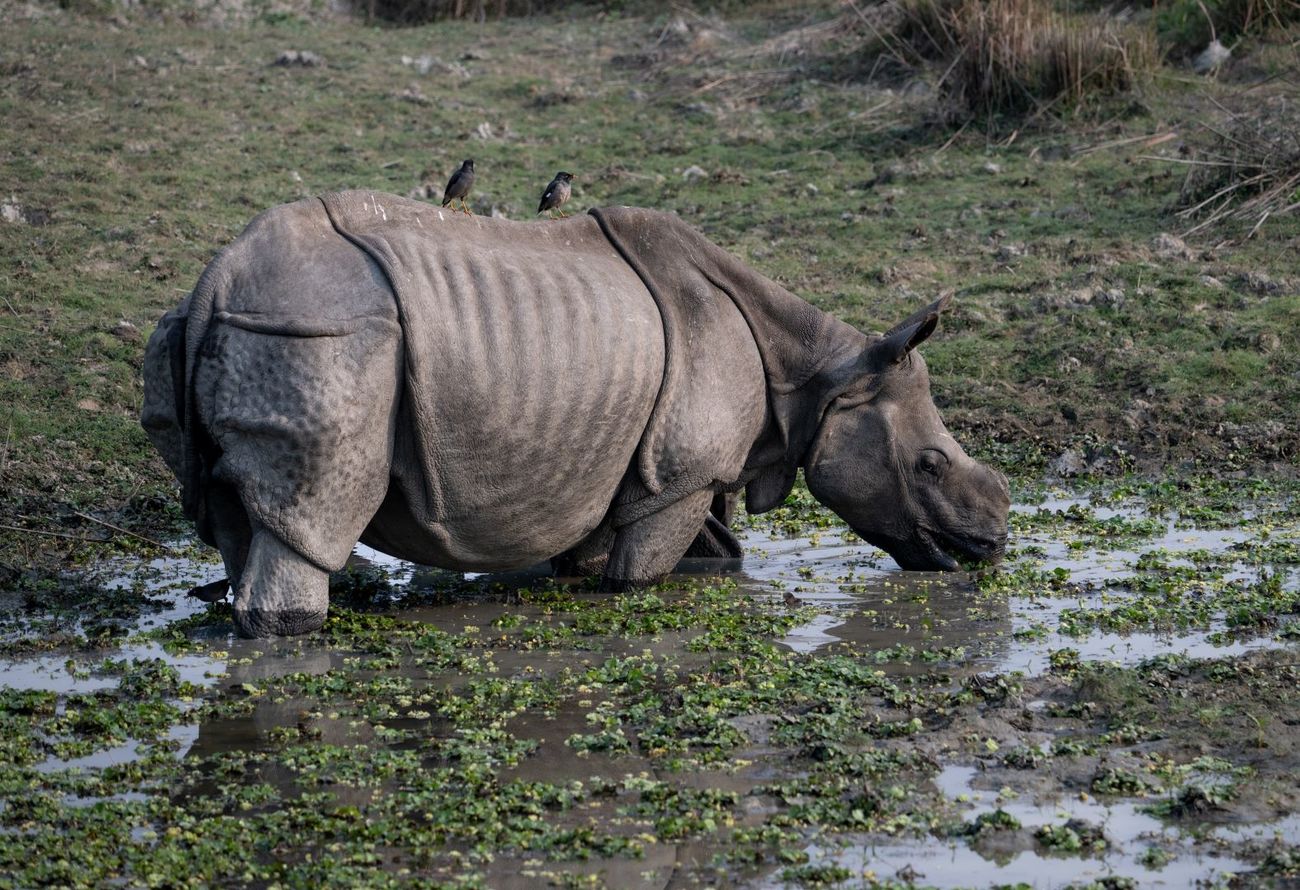
All species of rhinos were intensely hunted during the 19th and 20th centuries and continue to be targeted today. They are hunted solely for their horn, which is used in traditional medicine in China, Taiwan, Hong Kong, and Singapore. Ground into a powder, the horn is used to treat various conditions like epilepsy, fevers, and cancer. However, no scientific evidence suggests these horns have any medicinal value.
Countries in Africa and the Middle East also use rhino horns for decoration. They’re often carved and displayed as ornaments or used to make dagger handles. Because rhino horns are made of keratin, they continue to grow throughout the rhino’s life and can be trimmed without pain or discomfort. Although this suggests that humans could conceivably farm horns without injuring the rhinos, this is not how poachers obtain rhino horns.
Instead, poachers use guns and tranquilizer darts to incapacitate rhinos before removing the horn at its base with chainsaws. This creates an open wound that, combined with gunshot injuries, is often lethal for rhinos.
The greater one-horned rhino lost much of its natural habitat during the 20th century, when grasslands were converted into agricultural developments. In the 21st century, the amount of suitable land continues to shrink due to the decreasing quality of the available habitat. Livestock, woodland encroachment, and the invasion of alien plants are changing the shape of the landscape and depleting food sources for Indian rhinos.
Habitat loss results in habitat fragmentation. This happens when human development splits suitable habitat areas into isolated sections, making it difficult or impossible for rhinos to travel from one area to another.
As well as increased competition for food, these fragmented habitats also suffer from reduced genetic diversity. The rhinos living in fragmented habitats have no choice but to mate with each other, which leads to inbreeding or slowed reproduction rates to avoid inbreeding.
Because the current population of greater one-horned rhinos is almost entirely a result of conservation efforts, roughly 2000 of the 3000 wild Indian rhinos live in the protected Kaziranga National Park. This subpopulation may also develop problems with reduced genetic diversity.
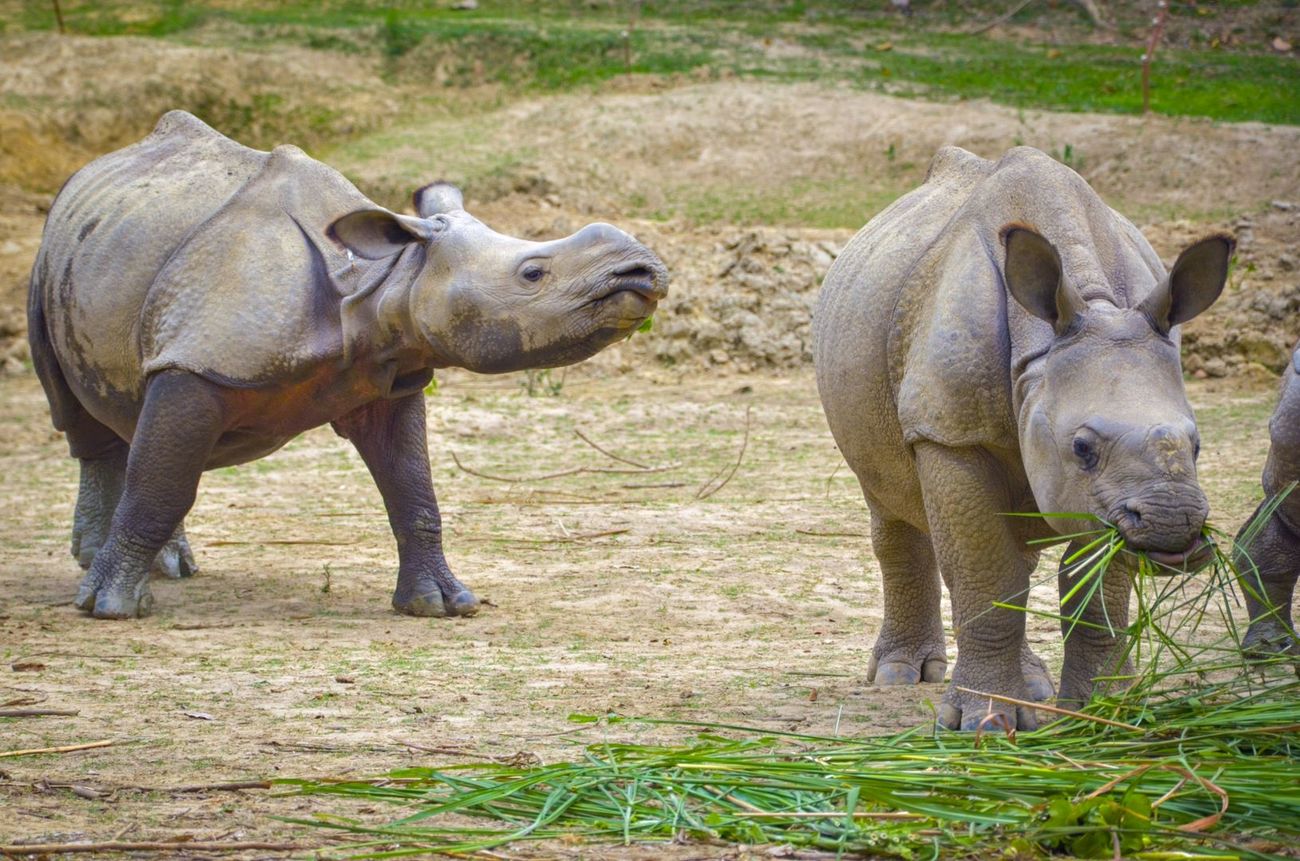
Climate change is an increasing threat to the Indian rhinoceros. Unpredictable flooding of the Brahmaputra River in Kaziranga National Park puts these rhinos at risk. As of 2019, at least 21 greater one-horned rhinos have been lost at the park during monsoon floods.
The conversion of Indian rhinos’ grassland habitat to farmland and grazing area for livestock has forced greater one-horned rhinos and humans to live in closer proximity. Rhinos may unknowingly trample or eat crops and damage human property. Many farmers will kill rhinos to prevent damage to their crops and farms.
The number of horns a rhino has depends on its species. White, black, and Sumatran rhinos have two horns—a small horn in the back and a much larger one in the front. Javan and greater one-horned rhinos each only have one horn.
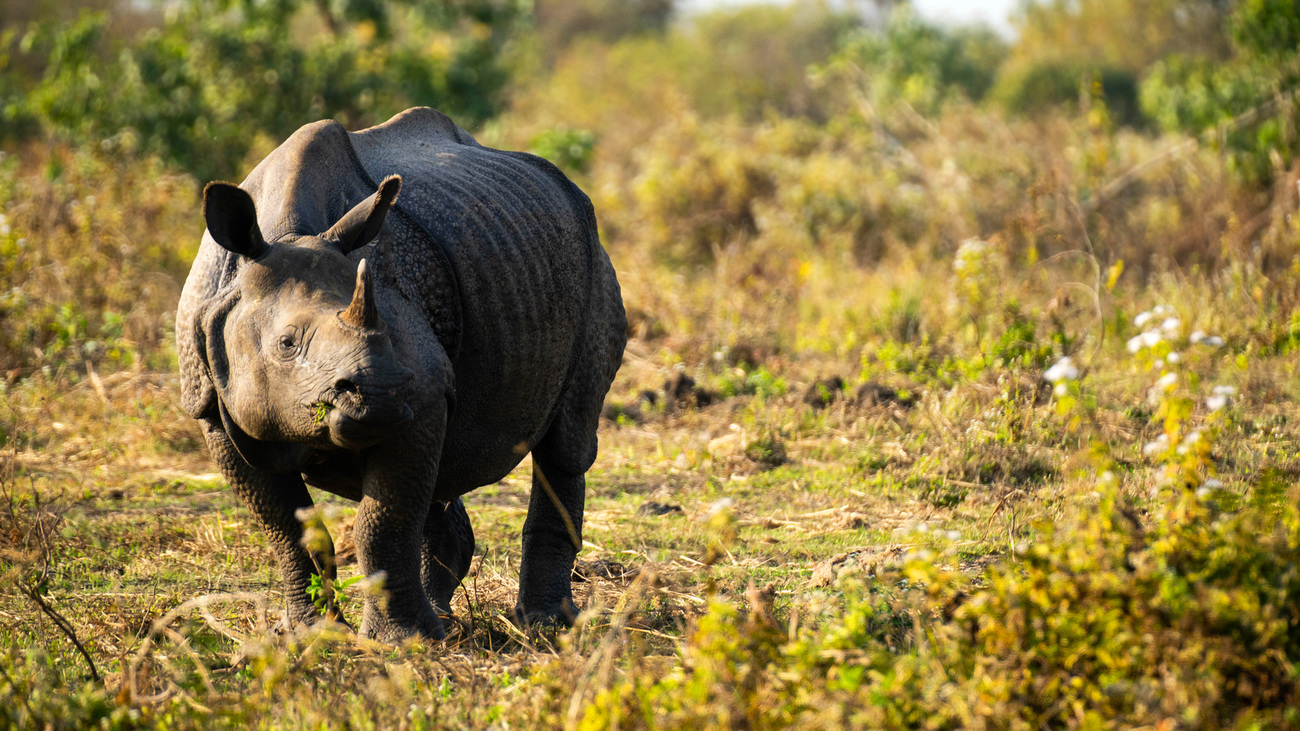
Rhinos do not have tusks like elephants. Instead, they have horns (or one horn, in the case of the Indian rhino). While both tusks and horns are traded as medicine and used to make decorative items, they’re made of different materials. Tusks are ivory, and rhino horns are keratin, the same protein as human hair and fingernails.
Indian rhinos are grazers, meaning the bulk of their diet is made up of grasses. They have a prehensile lip that allows them to grasp plants and bite accurately. In addition to grasses, greater one-horned rhinos will also eat leaves, branches from shrubs and trees, and various fruits. Because they spend a lot of time near watering holes, Indian rhinos sometimes eat aquatic plants.
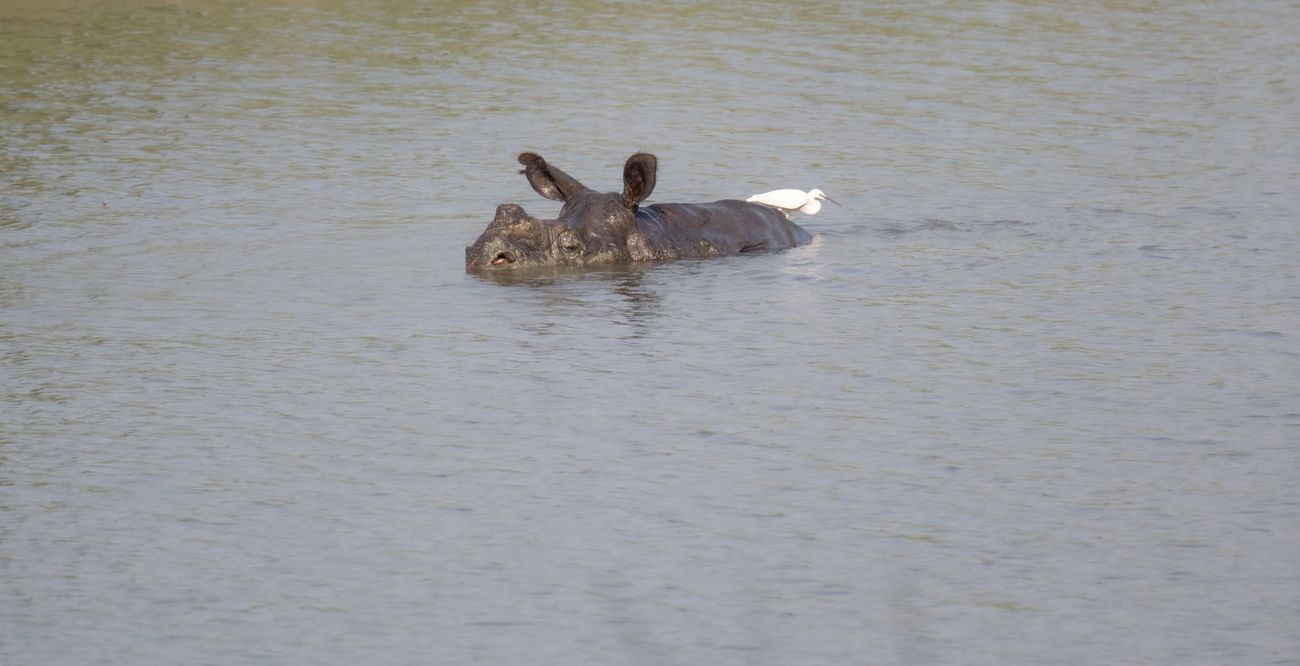
The greater one-horned rhino usually lives for around 40 years in the wild.
Like all rhinos, the Indian rhinoceros is grey in colour. They have thick skin with folds, often near joints, that make their bodies look segmented. They are the largest rhino species and can weigh between 1,800 kilograms to 2,700 kilograms. They stand two meters high at the shoulder, and their body length can reach almost four meters. Unlike the African rhino species, the Indian rhino only has one horn, which can reach up to 60 centimeters in length.
According to IUCN estimates, there are around 2,100-2,200 mature Indian rhinos left in the world. This number doesn’t include juveniles, which means females under 5 years old and males under 10 years old aren’t counted. Some sources that do count juveniles estimate around 4,000 total Indian rhinos.
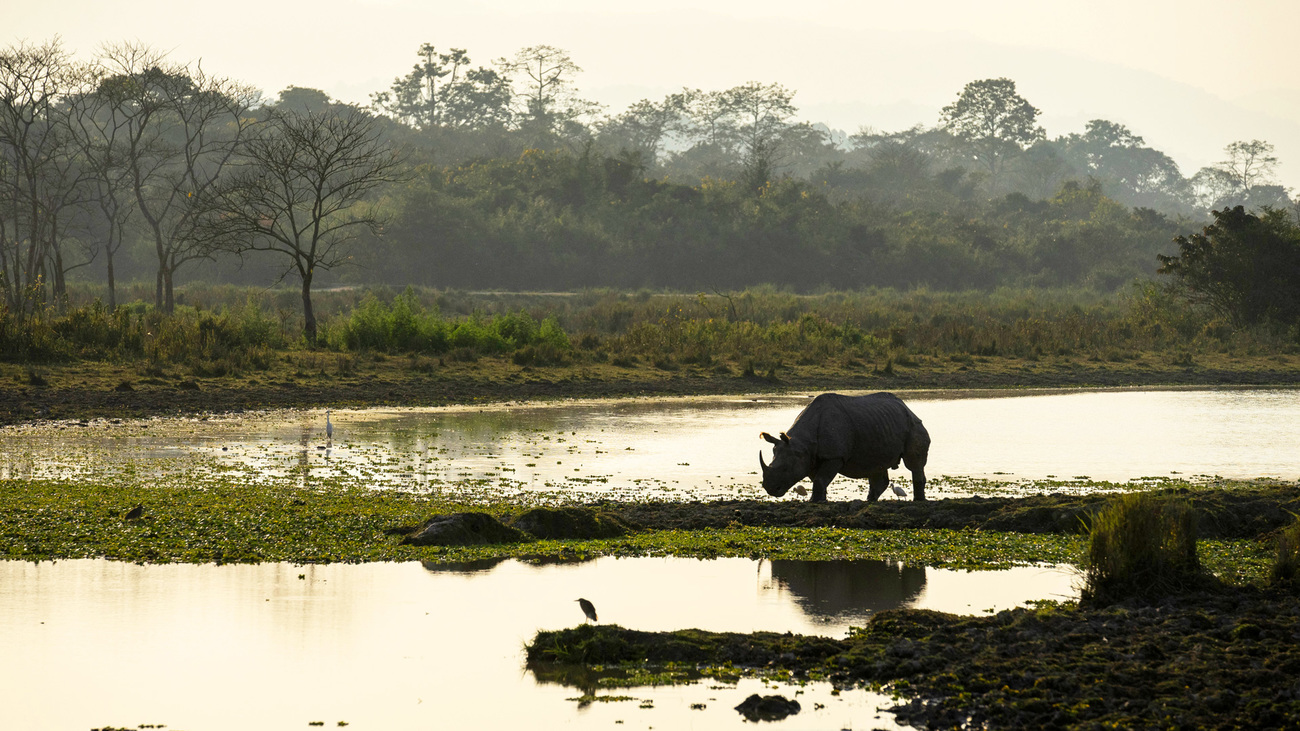
The successful restoration of the Greater one-horned rhino, or Indian rhino, in Manas National Park has been a joint effort between IFAW, local governments, wildlife rescue teams, and partner organisations, which has led to anti-poaching initiatives, community engagement, international policy, and landscape conservation. Led by the Assam Forest Department and the Bodoland Territorial Council, this incredible species recovery initiative works with the local community and civil society. Rhino populations have grown from fewer than 100 to 4,014 in 15 years.
In the 1990s, the rhino population of Manas National Park was wiped out during a decade of civil unrest. Rhinos were poached, and deforestation devastated the land. In 2006, alongside our partners, the Wildlife Trust of India (WTI) and the Assam Forest Department, IFAW started working to repopulate the park with crucial wildlife, including rhinos, and expand the protected land for these animals. Between 2006 and 2020, we moved 16 rescued rhino calves to Manas, and the rhino population there continues to grow. IFAW and WTI have improved the capacity of frontline forest staff in Manas through training and providing legal support to ensure convictions in rhino poaching cases. Many schools and communities have increased their vigilance in monitoring the park’s borders following IFAW-WTI’s community engagement.
During monsoon season, many rhinos and their calves are displaced and injured due to floods as they search for higher ground. In Kaziranga, India, IFAW works with WTI and the Assam Forest Department to run the IFAW-WTI Center for Wildlife Rehabilitation and Conservation to rescue, rehabilitate, and eventually release injured and orphaned rhino calves back into the wild.
IFAW also works at a policy and advocacy level to reduce the demand for rhino horn products and ensure that markets remain closed, helping to reduce incidents of poaching. We are proud to announce that in 2022, for the first time in 45 years, no greater one-horned rhinos were poached in the Indian state of Assam.
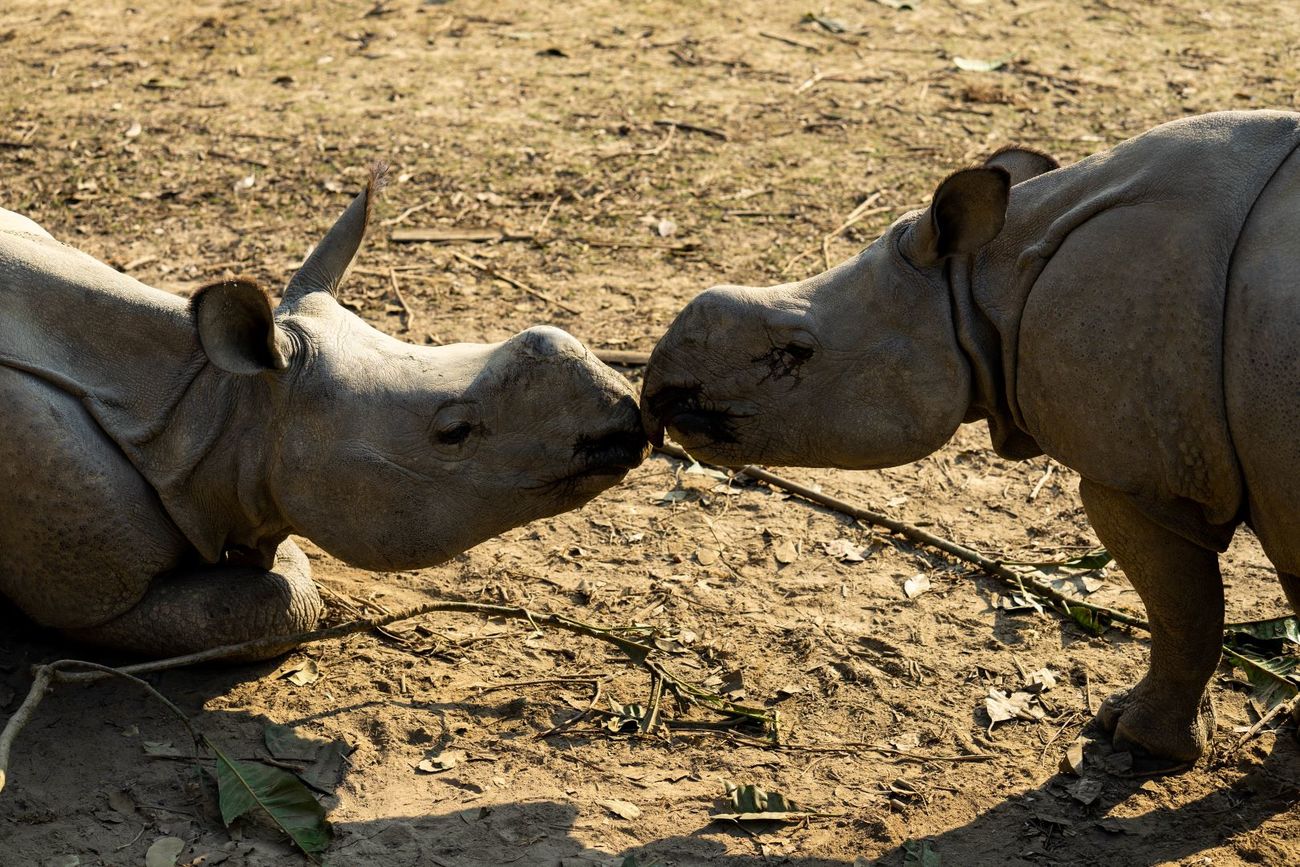
You can help protect the greater one-horned rhino at home by talking with family and friends about the devastation caused by the rhino horn trade. We can only make a difference in the Indian rhino population by changing behaviours and attitudes towards owning and using rhino horns.
The trade for illegal wildlife parts such as rhino horn has now been taken online. Wildlife cybercrime allows buyers and sellers to easily find each other. Help shut down this new trading platform by reporting suspected rhino items to the online platform as part of our cyber spotters program.
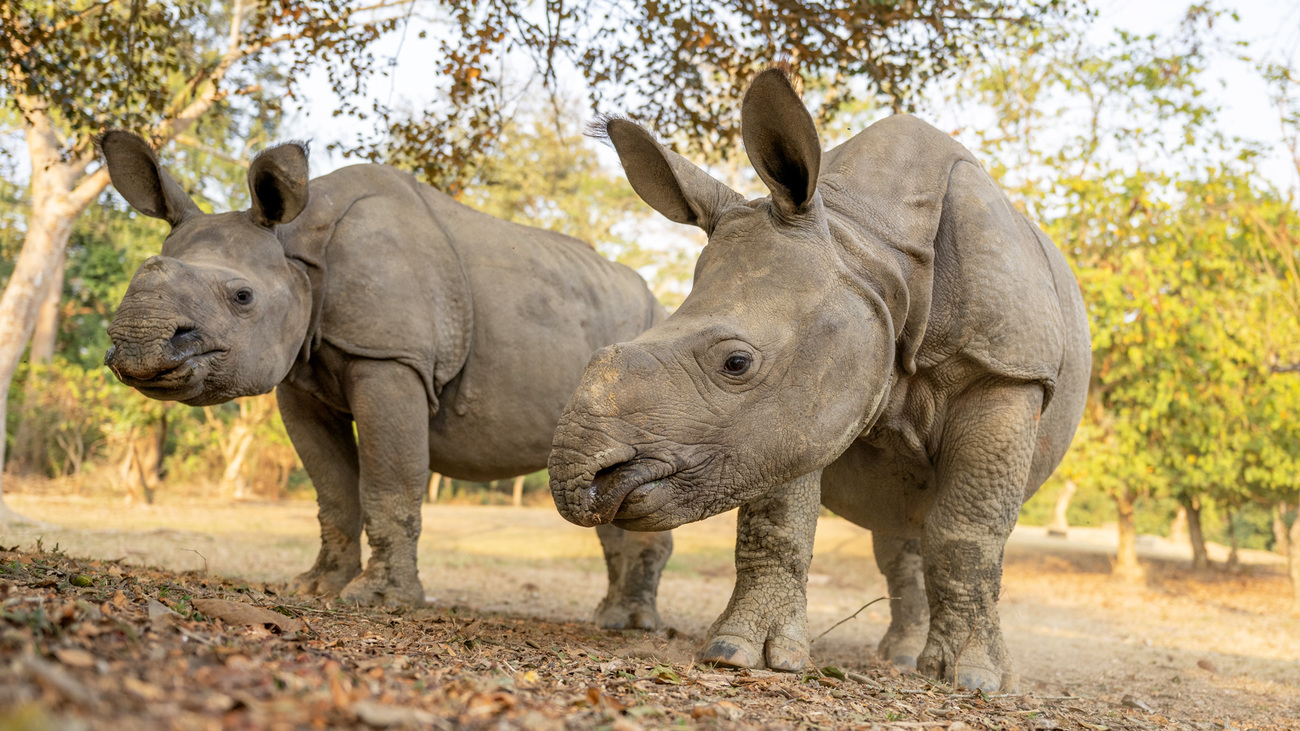
Unfortunately, the browser you use is outdated and does not allow you to display the site correctly. Please install any of the modern browsers, for example:
Google Chrome Firefox Safari